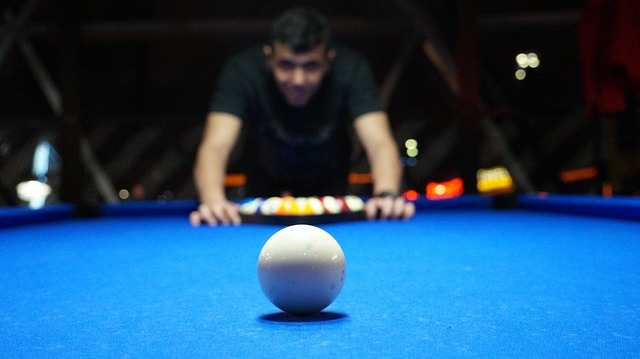Understanding the weight of a pool table is key to appreciating its quality and playability. The primary determinant is the slate base, with modern tables using a single piece of natural slate for enhanced stability (3.6–9 kg). Other factors include metal vs wood legs and table size/slate thickness. "How heavy is a pool table?" varies greatly; larger, high-end models weigh significantly more than budget options due to these components.
Wondering how heavy is just the slate on a pool table? This comprehensive guide breaks down the factors influencing a pool table’s weight. From understanding construction and materials, to weighing individual components like slates and legs, we explore what determines a pool table’s overall heft. Learn about various factors that can increase or decrease weight, ensuring you’re well-informed when considering your next purchase. Discover the secrets behind these popular gaming surfaces now!
- Understanding Pool Table Construction and Materials
- Weighing the Components: From Slates to Legs
- Factors Influencing the Overall Weight of a Pool Table
Understanding Pool Table Construction and Materials

Pool tables are crafted masterpieces, combining precision engineering with high-quality materials. At their core, they typically consist of a wooden frame, a bed composed of felt, and several pieces of slate. The slate, often overlooked, is a crucial component that significantly contributes to the overall weight and durability of the table. It serves as a sturdy base for the playing surface, ensuring accuracy and consistency in ball movement.
Modern pool tables commonly use a single piece of slate, usually made from natural materials like slate or marble. This monolithic construction not only adds stability but also lends the table its distinctive weight, making it robust enough to withstand intense play without compromising performance. Understanding these intricate details is essential when considering the overall heft of a pool table—a factor that directly impacts both its functionality and longevity.
Weighing the Components: From Slates to Legs

Pool tables, with their sleek designs and intricate mechanisms, are more than just games of skill; they’re intricate structures that combine precision engineering and craftsmanship. Weighing a pool table reveals not just its top surface but also the various components beneath, each playing a critical role in stability and performance. The slate, often considered the heart of the table, can vary significantly in weight based on its size, thickness, and material. Standard slates typically range from 8 to 15 pounds (3.6–6.8 kg), with high-end models or those designed for specific competitive purposes reaching upwards of 20 pounds (9 kg).
But the slate is just one part of the puzzle. The legs, supporting this substantial structure, can add considerable weight as well. Metal legs, common in commercial tables, offer stability but are heavier than their wooden counterparts. Wooden legs, often crafted from sturdy hardwoods like maple or oak, contribute to both strength and aesthetic appeal while generally being lighter. Together, these components create the foundation that supports not just the slate but also the dynamic interplay of cues and balls during play—a true testament to the art of pool table engineering.
Factors Influencing the Overall Weight of a Pool Table

The weight of a pool table, specifically the slate component, varies depending on several factors. Firstly, the size of the table plays a significant role; larger tables naturally weigh more due to their increased surface area and subsequent materials required for construction. Secondly, the thickness of the slate itself influences the overall weight. Thicker slate is denser, adding considerable mass to the table’s structure.
Additionally, the quality and type of slate used can dramatically affect the weight. Higher-grade slates are often thicker and more robust, ensuring a heavier table. Conversely, budget options may employ thinner slates, resulting in a lighter pool table. Other considerations include the table’s frame construction and whether it incorporates additional materials for stability and support.
A standard pool table’s slate, a key component for its stability and gameplay, typically weighs between 450 to 600 pounds (204 to 272 kg). This substantial weight, combined with the table’s other components, contributes to its overall average weight of around 1,400 pounds (635 kg) for a standard-sized table. Understanding these weights is essential when considering installation, movement, or the impact on playing experience.
